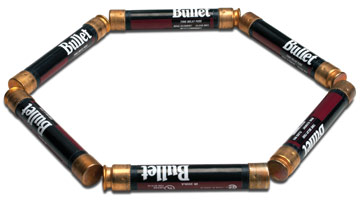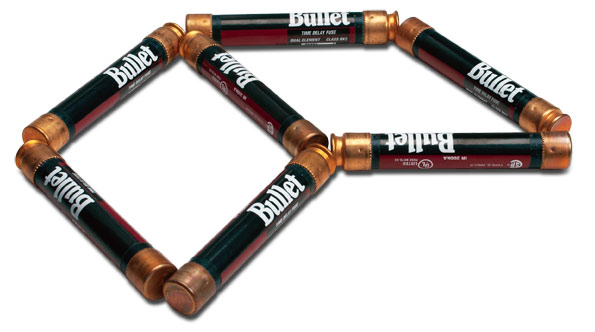In each issue of the Automation Notebook we feature a section of brainteasers. These are the brainteaser answers from Issue 10, 2008 of the Automation Notebook. The brainteaser questions are repeated in black. The answers to the brainteaser questions are highlighted in red with explanations. You can view the brainteasers from Issue 10, 2008 without the answers here: http://library.automationdirect.com/brainteasers-issue-10-2008/
1. Widget Fidget:
A factory owner took a certain number of widgets to a county fair and sold some of them. He took the unsold widgets back to his factory that night and – while he slept – his fully automated factory doubled the number of widgets on hand. He took these to the fair the next day and sold the same number as on the first day. That night his factory tripled his remaining widgets. Again he went to the fair and the same number was sold. On the third night his remaining widgets were quadrupled, and on the following day he sold the same number yet again. On the fourth night the factory quintupled his remaining stock of widgets. The next day he took those to the fair and sold the exact number as on each of the previous days, and thus depleted his entire stock.
What is the minimum number of widgets he could have taken to the fair on the first day? And on which night was his factory the most productive?
Answer: Let x represent the number of widgets taken to the fair on the first day, and let yrepresent the number of widgets sold each day. Then x-y is the number of widgets taken back to the factory the first night to be doubled. Then 2(x-y) is the number taken to market the second day, and:
2(x-y)-y is the number returned on the second night, to be tripled
3(2(x-y)-y)-y is the number returned on the third night, to be quadrupled
4(3(2(x-y)-y)-y)-y is the number returned on the fourth night, to be quintupled
And so, that at the end of the fair on the fifth day the number of widgets remaining is represented by the following equation, and also is known to be 0:
5(4(3(2(x-y)-y)-y)-y)-y = 0
We can simplify this equation to:
60x = 103y
There are many positive integer values for x and y that will solve this equation. Since 103 is prime, the smallest values (least common multiples) are: x = 103, and y = 60 so:
The factory owner took 103 widgets to the fair on the first day, and he sold 60 widgets each day.
Plugging these values back in above, we can determine that the factory made 43 widgets on the first night, 52 widgets on the second night, 54 widgets on the third night, but only 48 on the forth – therefore:
The third night was the most productive night for the factory.
2. Triangle Wrangle:
How many triangles can you count in this figure?
Answer: The total number of triangles is 35
The graphics below show the solution to this problem.
3. Fuse Ruse:
Can you transform the shape below, formed by these six Edison fuses, into two diamonds, by moving only two and adding one fuse?
Answer: The graphic below shows the solution to this problem.





